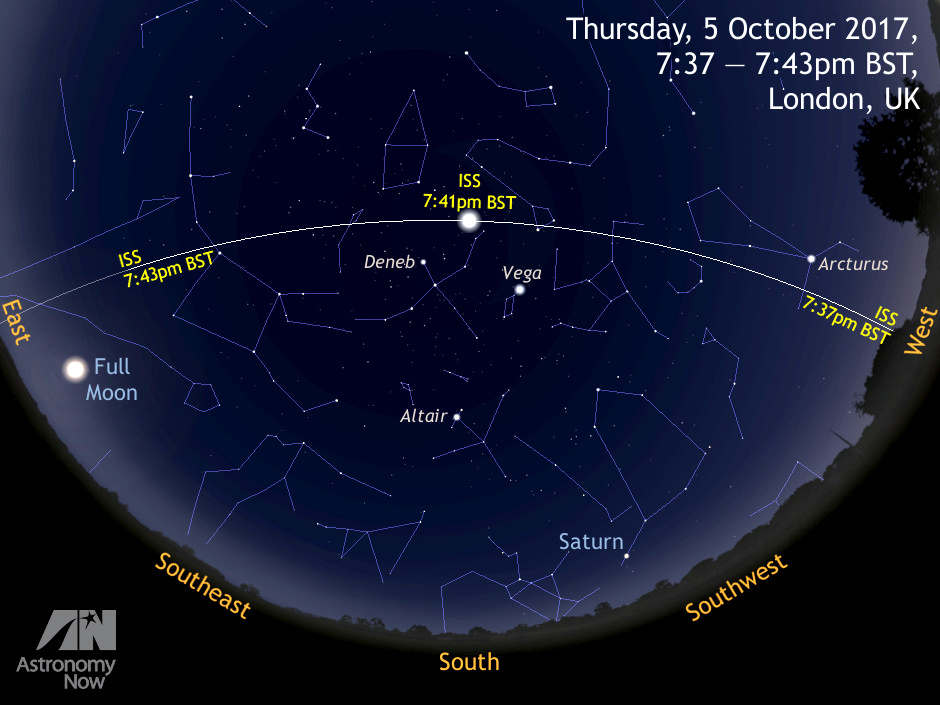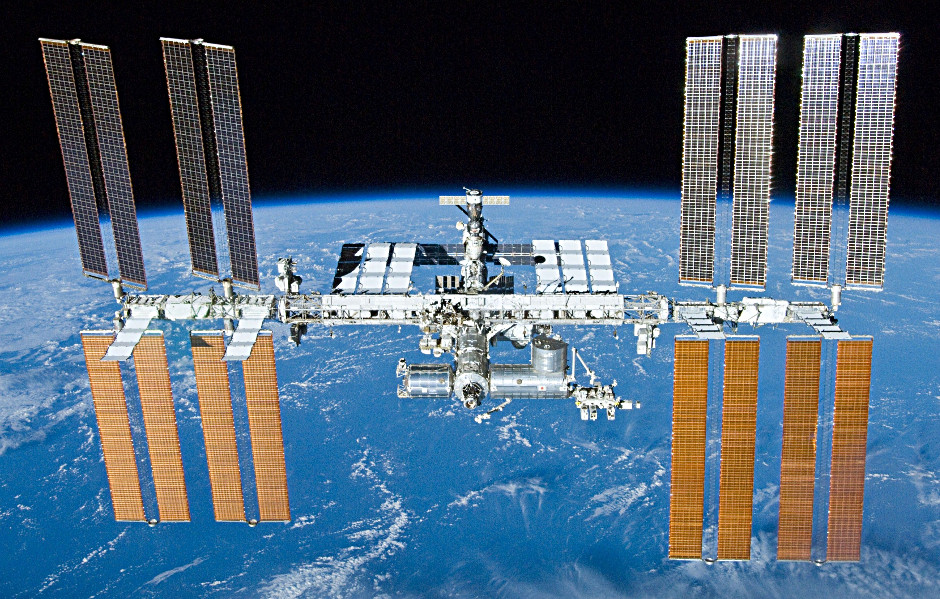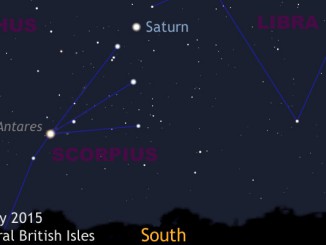
As an added bonus for those living in London, the ISS passes virtually overhead on the evening of Thursday, 5 October at 7:41pm (all times quoted in this article are British Summer Time) when, if skies are clear, it could attain a maximum brightness close to magnitude -3.5 — almost as bright as planet Venus at its best. The International Space Station’s track across the sky is lower the further north of London that you live, but even from Scotland the spacecraft will put on a fine show under clear skies.
If you have a clear view of the southern sky from east to west, be prepared to look low in the western sky of the British Isles at 7:37pm for the spacecraft’s ascent. The ISS will be close to conspicuous star Arcturus, the brightest in the northern celestial hemisphere, around 7:39pm. The Space Station lies highest in the southern sky of the British Isles close to 7:41pm.
As stated above, the ISS passes almost overhead as seen from London, but for those in the heart of the UK it will slip through the familiar Summer Triangle asterism bounded by conspicuous stars Vega, Deneb and Altair. As you follow the spacecraft’s descent in the east, note that it will fade out of sight into the Earth’s shadow close to 7:43pm above the rising full Moon.
Many of you may have used our online Almanac to obtain information about lunar phases, or the rising and setting of the Sun, Moon and planets for wherever you may live, but the Almanac can also tell you when and where to see the International Space Station.
In the Almanac, select the closest city to your location from the Country and City pull-down menus before ensuring that the box beside Add ISS passes? has a tick in it and — just as importantly — the Daylight Savings Time? box, if applicable to your time and location. The table underneath the month’s Moon phase data then shows current nighttime passes of the International Space Station over your chosen location during the next five days, if any.
For the given Date in year/month/day format, Local Time is the instant the ISS first becomes visible and Duration indicates the length of the sighting in minutes. At the given Local Time, look in the direction indicated by Approach and, weather permitting, you should see the ISS as a slowly moving, bright ‘star’. Max. elevation is how high the Station will get above your horizon (90° is overhead, while 20° is about the span of an outstretched hand at arm’s length) and Departure indicates where the ISS will be when it vanishes from sight. Sometimes an appearance or disappearance occurs well up in the sky when the Station emerges into sunlight or slips into the Earth’s shadow, respectively.
Here is an example from last year computed for the centre of the UK: In the example above, as seen from the heart of the British Isles on the evening of Tuesday, 2 August 2016, the ISS first appeared 16° (a span and a half of a fist at arm’s length) above the west-southwest (WSW) horizon at 10:09pm BST in a viewing window lasting five minutes. It attained a peak altitude of 50° above the south-southwest (SSW) horizon before sinking down to 15° above the eastern (E) horizon at 10:14pm BST. One orbit later, the ISS rose again at 11:46pm BST.
In the example above, as seen from the heart of the British Isles on the evening of Tuesday, 2 August 2016, the ISS first appeared 16° (a span and a half of a fist at arm’s length) above the west-southwest (WSW) horizon at 10:09pm BST in a viewing window lasting five minutes. It attained a peak altitude of 50° above the south-southwest (SSW) horizon before sinking down to 15° above the eastern (E) horizon at 10:14pm BST. One orbit later, the ISS rose again at 11:46pm BST.
Note: the actual times of events in the future will change as the orbit of the ISS varies over time; Almanac predictions made on the day are more accurate.



